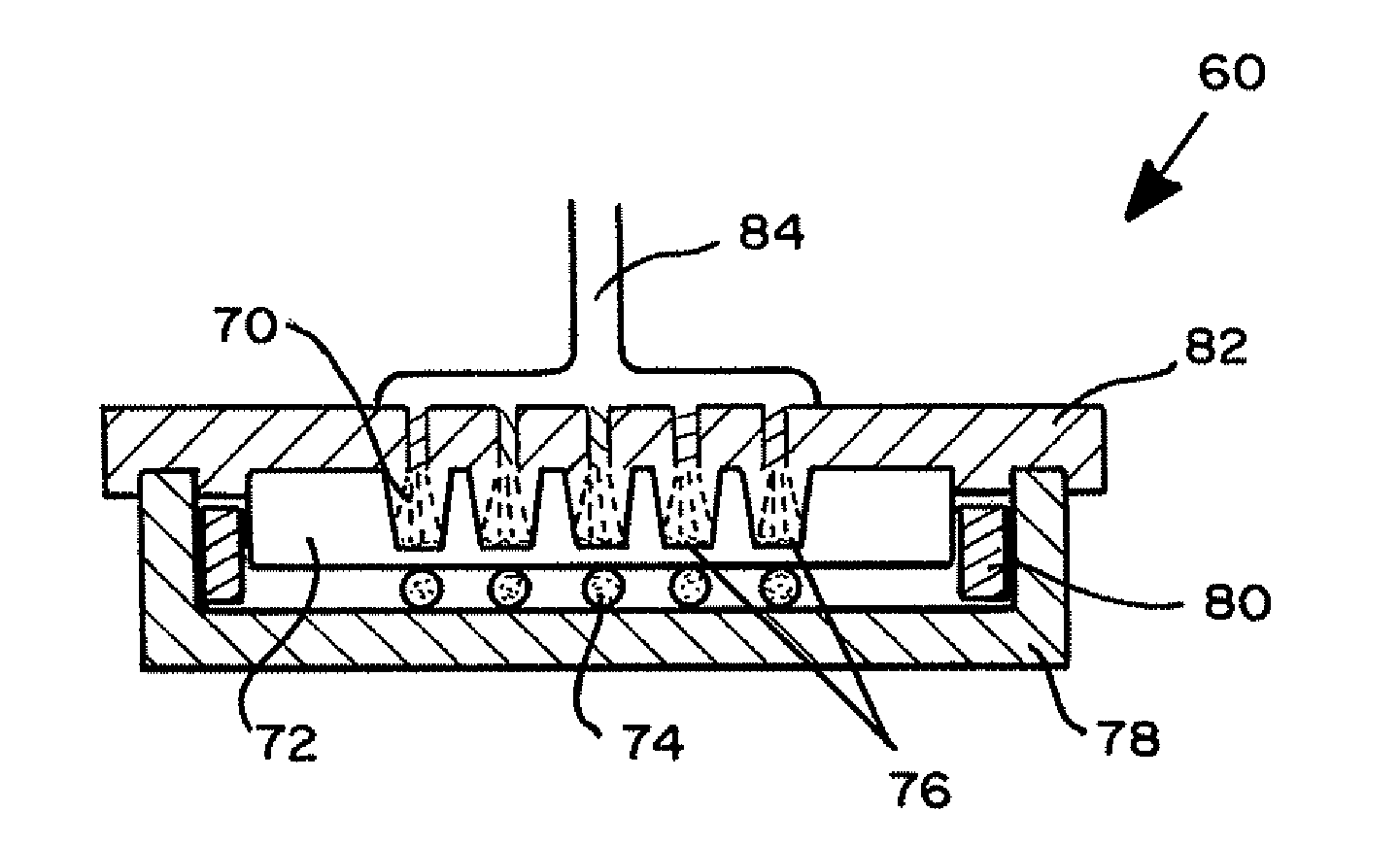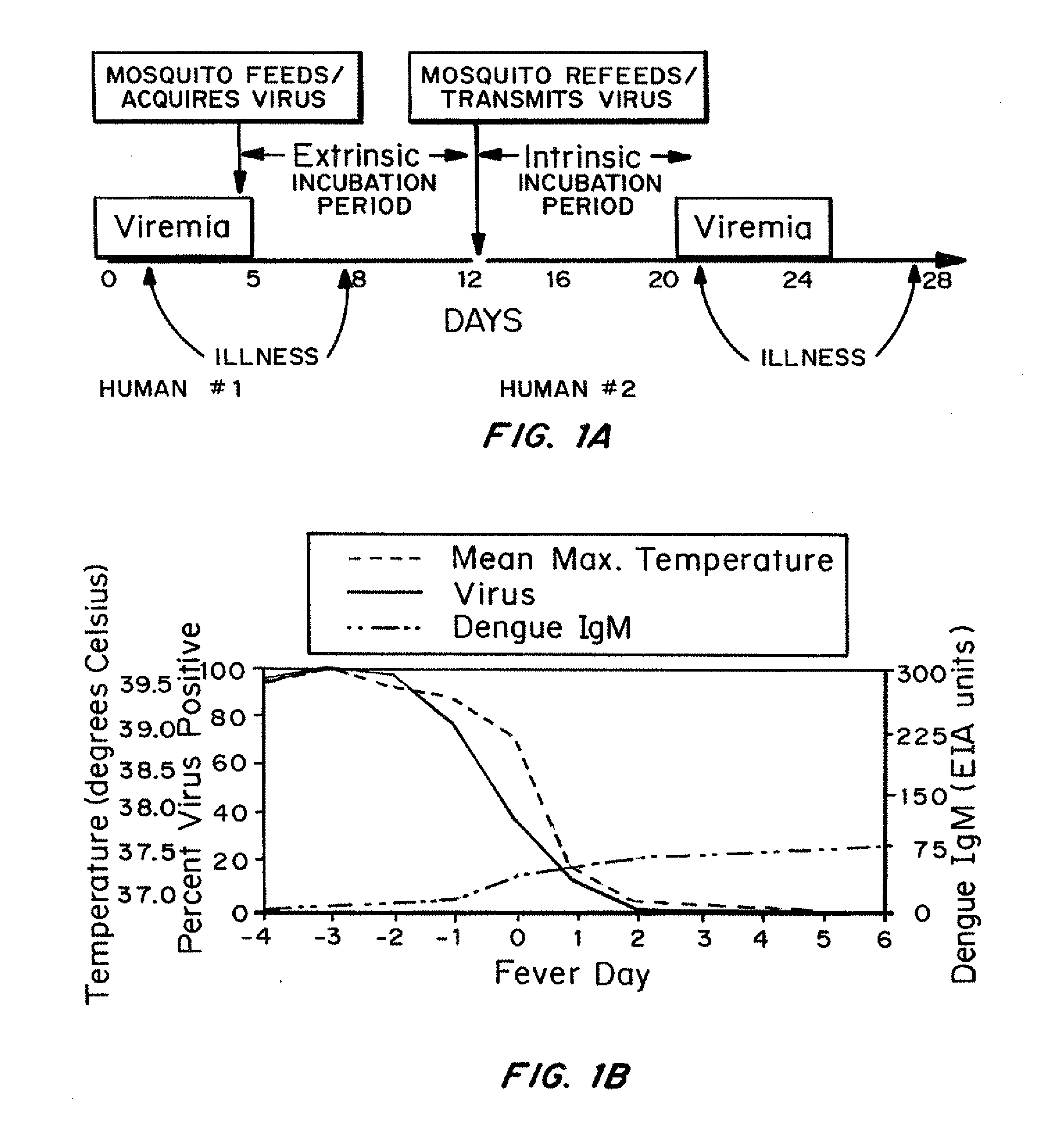Integrated microchip sensor system for detection of infectious agents
a microchip and sensor technology, applied in the field of microchannel multiplexed biosensors, can solve the problems of unmet needs, difficult to arrange tests, and improbable treatment, and achieve the effect of cost-effectiveness and efficiency
- Summary
- Abstract
- Description
- Claims
- Application Information
AI Technical Summary
Benefits of technology
Problems solved by technology
Method used
Image
Examples
example 1
Functionalization of Microchannels
[0103]Functionalization of the channel surfaces is necessary for piezoelectric affinity biosensors to selectively bind target analytes. The preferred mode is a 2-layer approach using 3-glycidoxypropyl trimethoxysilane (GOPS) in a first step to activate the chip surface, followed by functionalization with neutravidin to provide the capture surface for biotin-antibody labeled target entitities.
[0104]The preferred beads as models of target cells for detecting functionalization and monitoring of biosensor surfaces bearing neutravidin coating are fluor loaded latex beads also bearing biotin (Invitrogen, F-8768, exc / em 505 / 515 nm; 1.1 micron size containing high loadings of fluorescein). Such beads were used in optimizing the coating chemistries and conditions of the niobate chips.
[0105]The silanes, 3-glycidoxypropyl trimethoxy silane (GOPS) and 3-mercaptopropyl trimethoxy silane (MOPS; both from Gelest. PA), were used as the base layers initially on glas...
example 2
Functional and Biological Testing of Chip Surfaces
[0107]Biological target cells of elementary bodies (EB) of inactivated C. trachomatis were captured on antibody coated chip surfaces and stained using fluorescent staining with two specific stains: the nuclear stain DAPI and a fluorecein labeled anti-mouse IgG for a Mab labeled epitope of EB. The purpose was to demonstrate specific capture of EB, labeled with both DAPI and fluorescein, on chip surfaces, to establish the limit of detection by titering and to assess specificity as seen in low fluorescence from NSB. These studies were done prior to performance studies in the SAW detection mode. Binding to the chip was demonstrated when low or high concentrations of EB were added.
[0108]The selected antibodies will be bound to prototype biosensor chips using the processes appropriate for the nano-film and antibodies being evaluated. These prototype coated chips will be used for further characterization of the bioselective films, and for t...
example 3
Selective Detection of Inactivated C. Trachomatis Using Spiked Samples
[0109]Practical applications in POC clinical diagnosis frequently require rapid multiplexed test capability providing results for more than one condition from a single sample. The multiplexed biosensor chips were tested against inactivated purified strains of N. gonorrhoeae and C. trachomatis, along with a collection of mock clinical samples (known bacteria in human urine) and controls to demonstrate selective detection.
[0110]Multiplexed sensor array chips were tested against known bacterial samples (positive and negative) for sensitivity and specificity. Purified strains of inactivated N. gonorrhoeae and C. trachomatis, spiked in PBS, individually and in combination at several concentrations, were tested, with PBS as a control. The mass sensitivity of the biosensor devices of less than a picogram allows detection of low bacterial concentrations down to a single bacterium.
[0111]Based on the results of tests with ...
PUM
| Property | Measurement | Unit |
|---|---|---|
| size | aaaaa | aaaaa |
| length | aaaaa | aaaaa |
| length | aaaaa | aaaaa |
Abstract
Description
Claims
Application Information
 Login to View More
Login to View More - R&D
- Intellectual Property
- Life Sciences
- Materials
- Tech Scout
- Unparalleled Data Quality
- Higher Quality Content
- 60% Fewer Hallucinations
Browse by: Latest US Patents, China's latest patents, Technical Efficacy Thesaurus, Application Domain, Technology Topic, Popular Technical Reports.
© 2025 PatSnap. All rights reserved.Legal|Privacy policy|Modern Slavery Act Transparency Statement|Sitemap|About US| Contact US: help@patsnap.com



